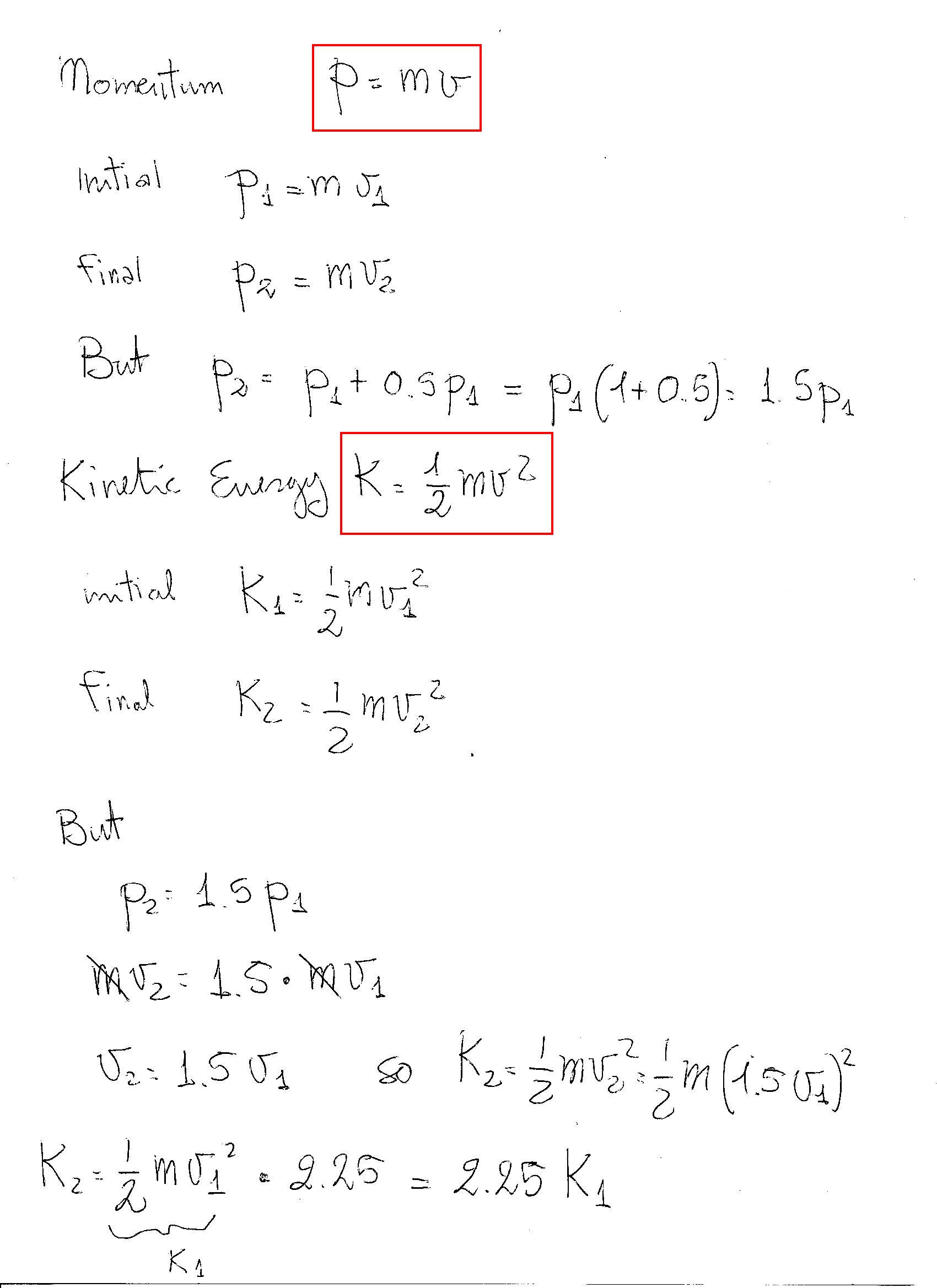"Let us rearrange the kinetic energy equation."
E=1/2*m*v^2
(2E)/m=v^2
v=sqrt((2E)/m)
"let us multiply both sides of equation by m."
m*v=m*sqrt((2E)/m)
m*v=sqrt((2Ecancel(m^2))/cancel(m))
m v=sqrt (2mE)
"Let's write this equation twice for the initial and final cases."
"initial case:"
P_i=sqrt(2m E_i)" "(1)
"final case:"
P_i+0.5P_i=sqrt(2m(E_i+n E_i)
3/2P_i=sqrt(2m(E_i+n E_i))" "(2)
"let us find "((1))/((2))
cancel(P_i)/(3/2cancel( P_i))=sqrt((cancel(2m)E_i)/(cancel(2m)(E_i+n E_i)))
2/3=sqrt(E_i/(E_i+n E_i))
(2/3)^2=(sqrt(E_i/(E_i+n E_i)))^2
4/9=E_i/(E_i+n E_i)
9E_i=4 E_i+4nE_i
9E_i-4E_i=4nE_İ
5cancel(E_i)=4ncancel(E_i)
n=5/4" "125%



